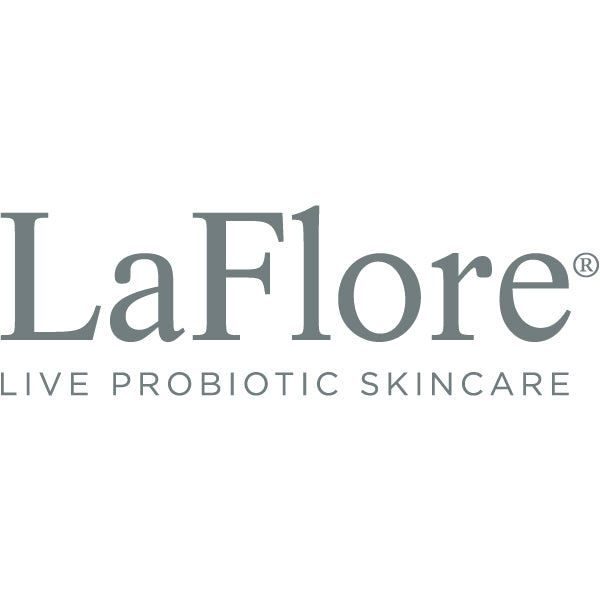
The Silent Sunburn: Protecting Your Skin's Unseen Heroes with Live Probiotics

We all know the drill: too much sun can lead to wrinkles, dark spots, and even skin cancer. But what if we told you there's a "silent sunburn" happening beneath the surface, impacting a crucial part of your skin you might not even know about? We're talking about your skin's microbiome – a bustling community of tiny, beneficial organisms that play a massive role in keeping your skin healthy and happy.
Think of your skin microbiome as its own delicate ecosystem. It's vital for maintaining your skin's protective barrier, helping your immune system, and even influencing how your skin looks. But here's the kicker: UV radiation from the sun throws this whole system into disarray.
What Happens When the Sun "Burns" Your Microbiome?
When your skin gets too much sun, it experiences an "unseen disruption" called dysbiosis. This isn't just a minor tweak; it's a significant shift that can lead to:
- Less Diversity: Just like a healthy forest needs many different kinds of plants and animals, a healthy skin needs a wide variety of microbes. Sun exposure reduces this diversity, making your skin less resilient.
- Bad Bugs Taking Over: The delicate balance between helpful and potentially harmful bacteria gets tipped. You see a decrease in the good guys and an increase in those that can cause problems.
- Inflammation: Sun exposure triggers inflammation, which creates an environment where certain bacteria thrive while others are suppressed. It's a vicious cycle that further disrupts your skin's balance.
- Weakened Defenses: UV radiation also weakens your skin's immune system. This makes it harder for your body to keep microbial populations in check, potentially leading to an overgrowth of problematic species.
- Cellular Damage: The sun's rays create harmful molecules called reactive oxygen species (ROS) that damage not just your skin cells but also the beneficial microbes living on your skin, affecting their ability to function.
Essentially, sun exposure can leave your skin's protective microbial shield compromised and out of balance.
How Can You Help Your Skin's Microbiome Recover?
We already know that wearing broad-spectrum sunscreen is crucial for protecting your skin from visible damage. But now, understanding the "silent sunburn" on your microbiome, we need to think about what happens after sun exposure.
This is where topical live probiotics, like those found in LaFlore's Live Probiotic Concentrated Serum, come into play. Just as probiotics can help restore balance to your gut, applying live probiotics to your skin can help replenish and rebalance your skin's microbiome.
Imagine giving your skin's unseen heroes a much-needed boost! By introducing beneficial bacteria, you're helping to:
- Restore Diversity: Introducing new, healthy microbes can help bring back the variety your skin needs to thrive.
- Rebalance Populations: They can help shift the balance back in favor of the good bacteria, pushing out the opportunistic pathogens.
- Support Skin Barrier Function: A healthy microbiome contributes to a stronger skin barrier, which is essential for overall skin health.
- Calm Inflammation: By rebalancing the microbiome, you can help create an environment that's less prone to inflammation.
Don't Let Your Skin Suffer in Silence!
While the visible signs of sun damage are well-known, the disruption of your skin's microbiome is a "silent sunburn" with potentially long-lasting effects. By incorporating topical live probiotics, like LaFlore's Live Probiotic Concentrated Serum, into your skincare routine, especially after sun exposure, you can take a proactive step in nurturing and protecting this vital aspect of your skin's health.
FAQs
What is the skin microbiome? The skin microbiome is a delicate ecosystem of tiny, beneficial organisms living on your skin that are crucial for maintaining its protective barrier, modulating immune responses, and influencing overall appearance.
What is the "silent sunburn" mentioned in the blog? The "silent sunburn" refers to the profound disruption that UV radiation inflicts on the skin's delicate microbiome, even if visible signs of sunburn aren't present.
How does UV radiation harm the skin microbiome? UV radiation throws the skin microbiome into disarray, leading to a state of dysbiosis. This includes reducing microbial diversity, tipping the balance between beneficial and potentially harmful bacteria, fueling inflammation, suppressing the skin's local immune system, and directly damaging microorganisms through oxidative stress.
What are some of the consequences of a disrupted skin microbiome? A disrupted skin microbiome can lead to less resilient and less healthy skin, an increase in opportunistic pathogens, exacerbated inflammation, and less effective control over microbial populations.
How can topical live probiotics help the skin microbiome after sun exposure? Topical live probiotics, like those in LaFlore's Live Probiotic Concentrated Serum, can help replenish and rebalance your skin's microbiome by restoring diversity, rebalancing bacterial populations, supporting the skin barrier function, and potentially calming inflammation.
Is sunscreen still important if I'm using topical probiotics? Yes, reinforcing sun protection with broad-spectrum sunscreen is even more critical when considering the unseen damage UV radiation can do to the microbiome. Topical probiotics are for post-sun exposure care to support the microbiome.
What is dysbiosis in the context of the skin microbiome? Dysbiosis is a fundamental alteration of the skin microbiome characterized by reduced microbial diversity and a shift in the balance between beneficial and potentially harmful bacteria, often caused by UV exposure.
Burns EM, Ahmed H, Isedeh PN, Kohli I, Van Der Pol W, Shaheen A, Muzaffar AF, Al-Sadek C, Foy TM, Abdelgawwad MS, Huda S, Lim HW, Hamzavi I, Bae S, Morrow CD, Elmets CA, Yusuf N. Ultraviolet radiation, both UVA and UVB, influences the composition of the skin microbiome. Exp Dermatol. 2019 Feb;28(2):136-141. doi: 10.1111/exd.13854. Epub 2019 Jan 14. PMID: 30506967; PMCID: PMC7394481. - https://pubmed.ncbi.nlm.nih.gov/30506967/
Ross, A. A., Rodrigues Hoffmann, A., & Neufeld, J. D. (2019). The skin microbiome of vertebrates. Microbiome, 7(1), 79. https://doi.org/10.1186/s40168-019-0694-6
بسيوني, س., وآخرونAmar Y, Niedermeier S, Silva R, Kublik S, Schloter M, Biedermann T, Köberle M, Eberlein B. Skin microbiome dynamics in patients with polymorphic light eruption in response to ultraviolet radiation. Br J Dermatol. 2025 Mar 18;192(4):684-696. doi: 10.1093/bjd/ljae464. PMID: 39576029.
D'Orazio, J., Jarrett, S., Amaro-Ortiz, A., & Scott, T. (2013). UV radiation and the skin. International journal of molecular sciences, 14(6), 12222–12248. https://doi.org/10.3390/ijms140612222
Bernard JJ, Gallo RL, Krutmann J. Photoimmunology: how ultraviolet radiation affects the immune system. Nat Rev Immunol. 2019 Nov;19(11):688-701. doi: 10.1038/s41577-019-0185-9. Epub 2019 Jun 18. PMID: 31213673. https://pubmed.ncbi.nlm.nih.gov/31213673/
Cadet J, Douki T, Gasparutto D, Ravanat JL. Oxidative damage to DNA: formation, measurement and biochemical features. Mutat Res. 2003 Oct 29;531(1-2):5-23. doi: 10.1016/j.mrfmmm.2003.09.001. PMID: 14637244. https://pubmed.ncbi.nlm.nih.gov/14637244/

